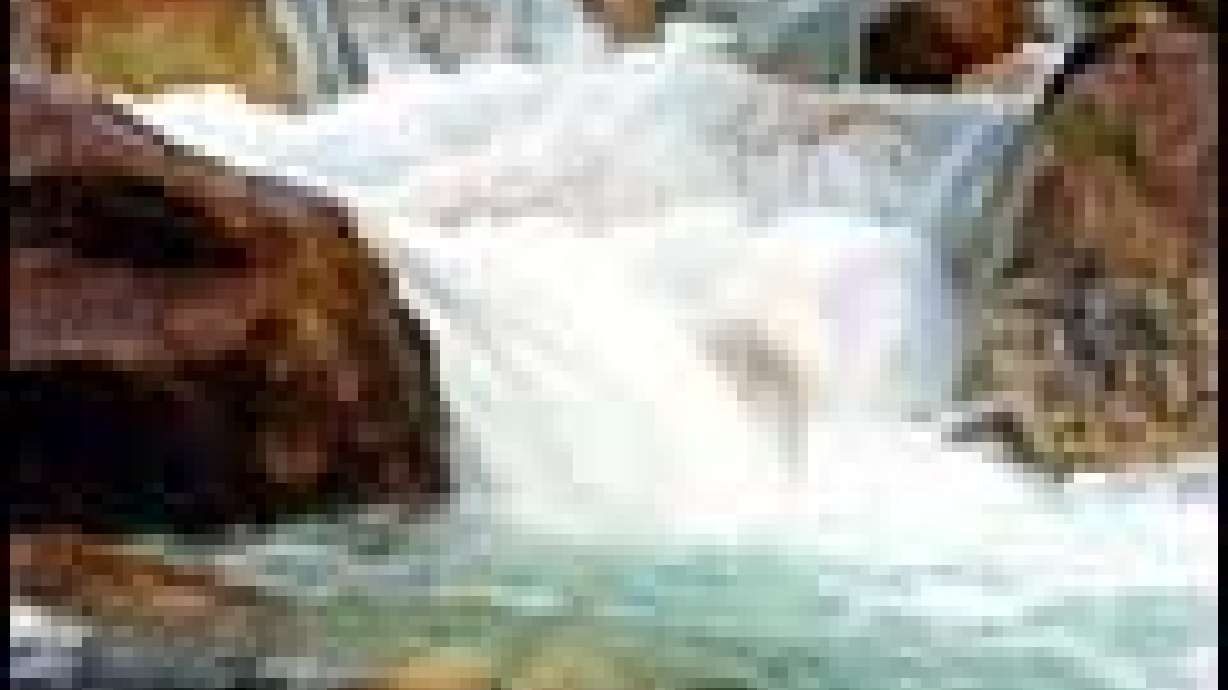Estimated read time: 3-4 minutes
This archived news story is available only for your personal, non-commercial use. Information in the story may be outdated or superseded by additional information. Reading or replaying the story in its archived form does not constitute a republication of the story.
OGDEN, Utah (AP) -- Reservoir managers want to release enough water to have room for the heavy runoff this spring. At the same time, they don't want to release too much and then have too little water for use this summer.
It's tricky, said Tage Flint, manager of Weber Basin Water Conservancy District.
Weber Basin manages all the reservoirs on the Weber River drainage, which extends all the way east and south to Park City. It also jointly manages Pineview Reservoir.
The reservoirs were built to provide irrigation water and prevent flooding.
All of them are filling rapidly because of recent rains and melting snow.
Pineview Reservoir is letting extra water into the Ogden River to maintain a 20,000-acre-foot space. That is how much extra the snowmelt is expected to add.
Flint said reservoirs at East Canyon, Smith & Morehouse, Echo and Lost Creek, also are being watched carefully so they don't get too full too soon.
This is a far cry from the recent drought years, when the district kept all the runoff it could.
Flint said the runoff this year is so heavy that the 200,000-acre-foot Willard Bay, which was down to just 25,000 acre-feet last fall, is adding 2,000 acre-feet a day and is expected to fill.
Smaller reservoirs, such as Cutler Reservoir, are even harder to manager.
That dam, operated by Utah Power & Light, has been releasing large amounts of water, flooding some farmland west of Brigham City near the Bear River Bird Refuge.
One rancher claimed last week that the flooding killed some of his cattle, and he cut the road to the Bear River Bird Refuge in an unsuccessful attempt to relieve the pressure.
Utah Power said the release wasn't out of the ordinary.
Steve Rush, Utah Power's regional community manager, said Cutler Dam was built in 1927 for the sole purpose of generating electricity. At 15,000 acre-feet capacity, it is too small to provide meaningful flood control or irrigation storage, and he said the federal government has set a very strict limit on how high or low the water behind the dam can be.
By Friday afternoon, the level had been lowered by 6 feet, but that isn't a lot of leeway because the dam is so small.
"We've got to put that in perspective," he said. "If we were to empty Cutler completely, the inflow that is coming in right now would fill that in 24 hours, completely."
Flint said the situation at Cutler Dam is a lesson on how hard it is to control flooding.
"It takes a relatively large reservoir to provide significant flood control," Flint said. "It takes a lot of volume to absorb that runoff. We get a lot of questions as to why we wait until now to release water, why don't we do it in the winter.
That's because in the winter dam managers don't know how much rain and runoff the spring will bring, he said.
So they have to wait until spring comes and then deal with what whatever weather happens.
(Copyright 2005 by The Associated Press. All Rights Reserved.)









